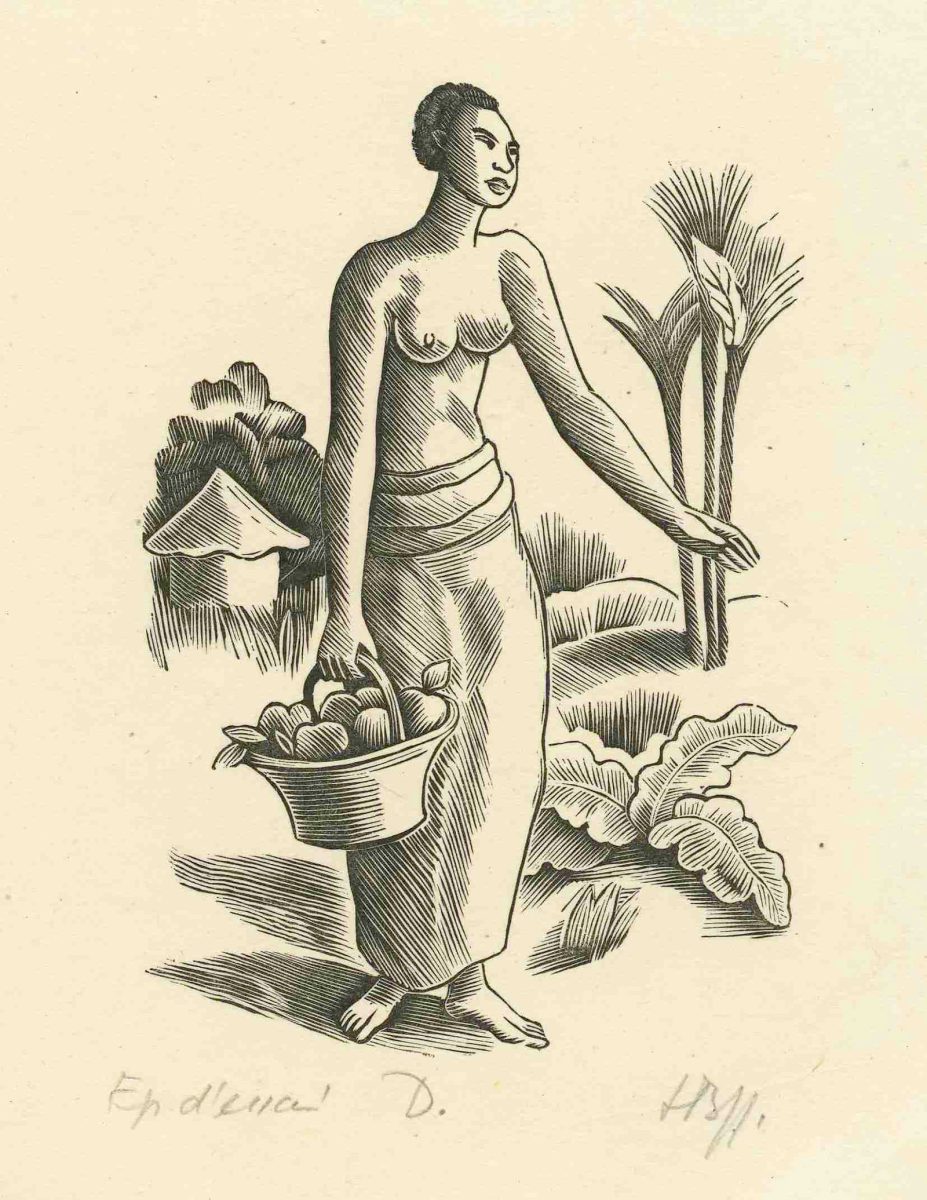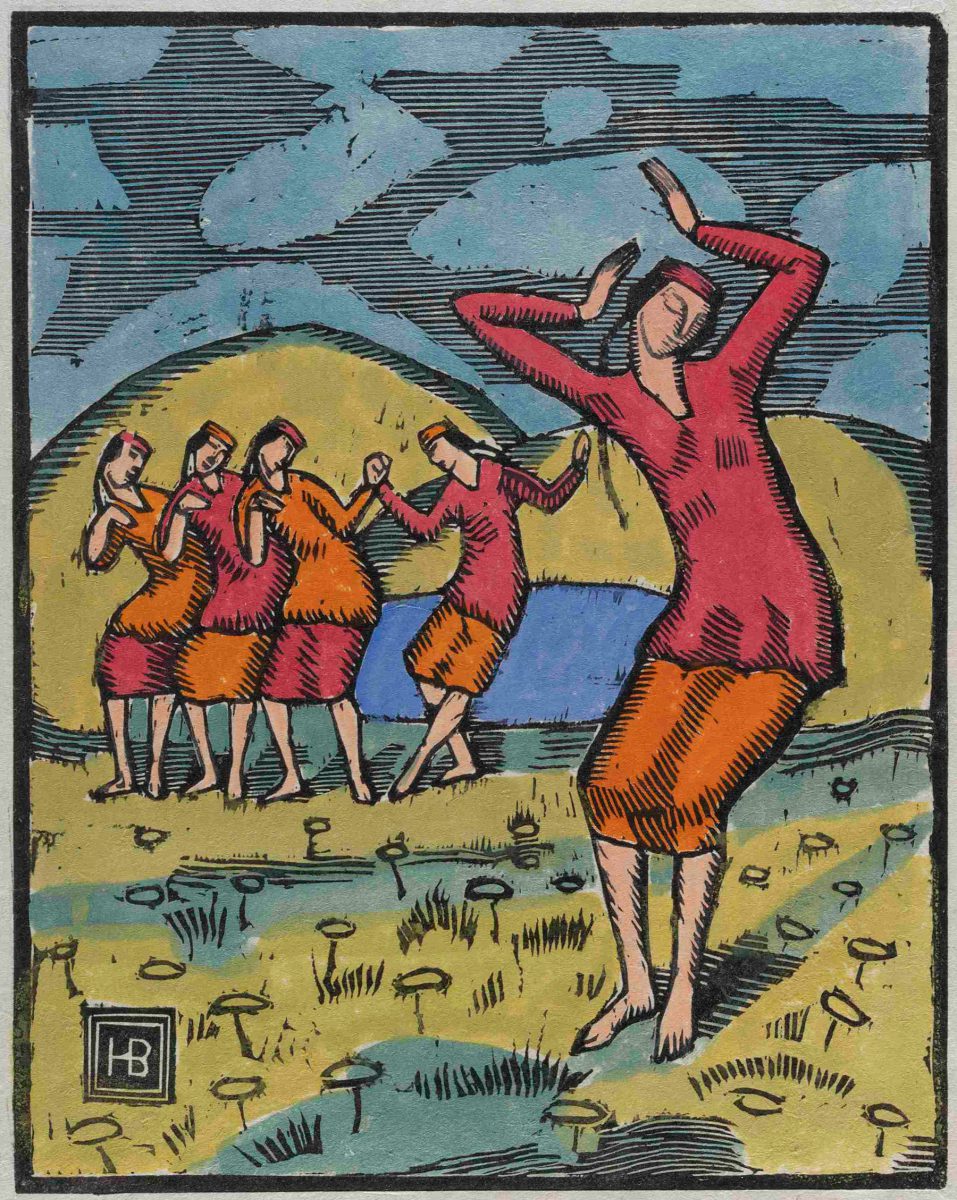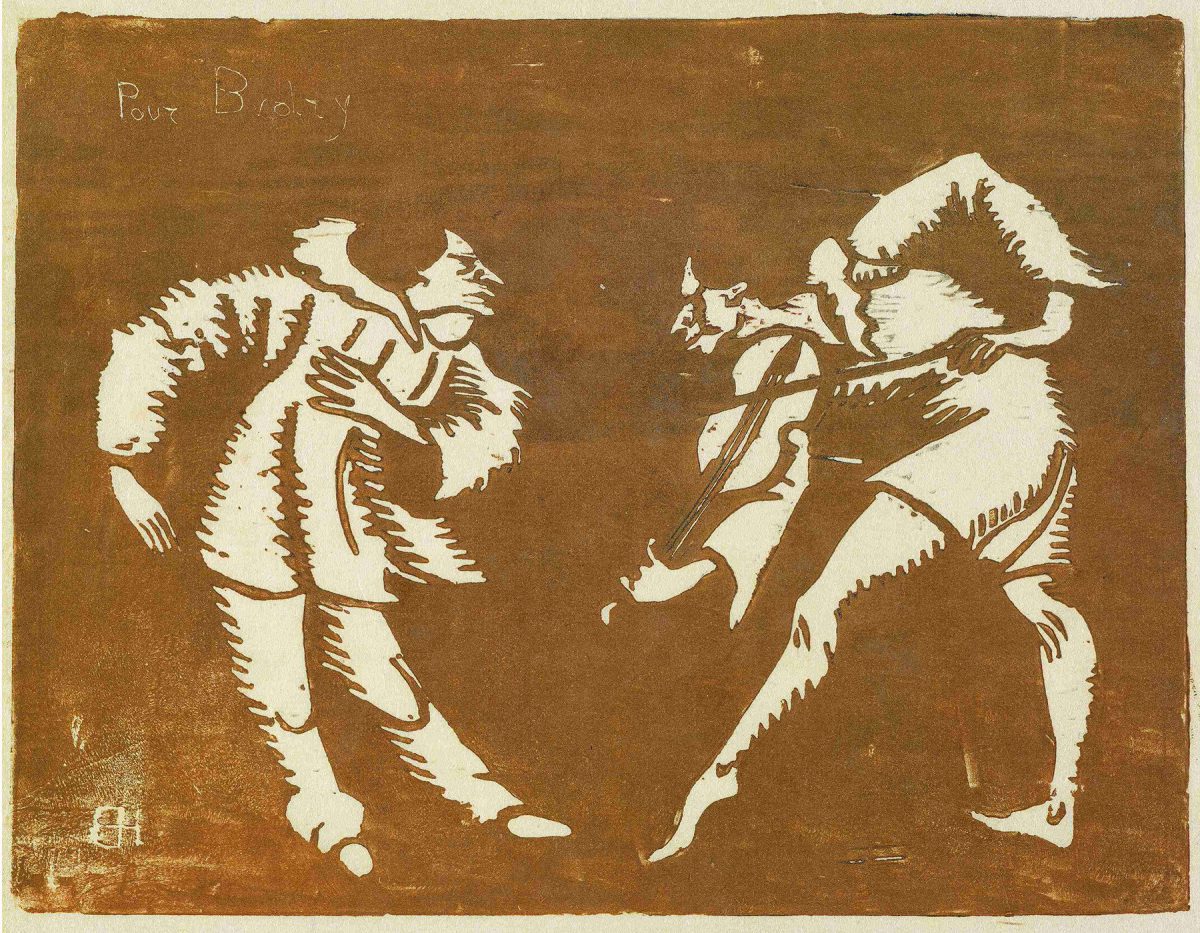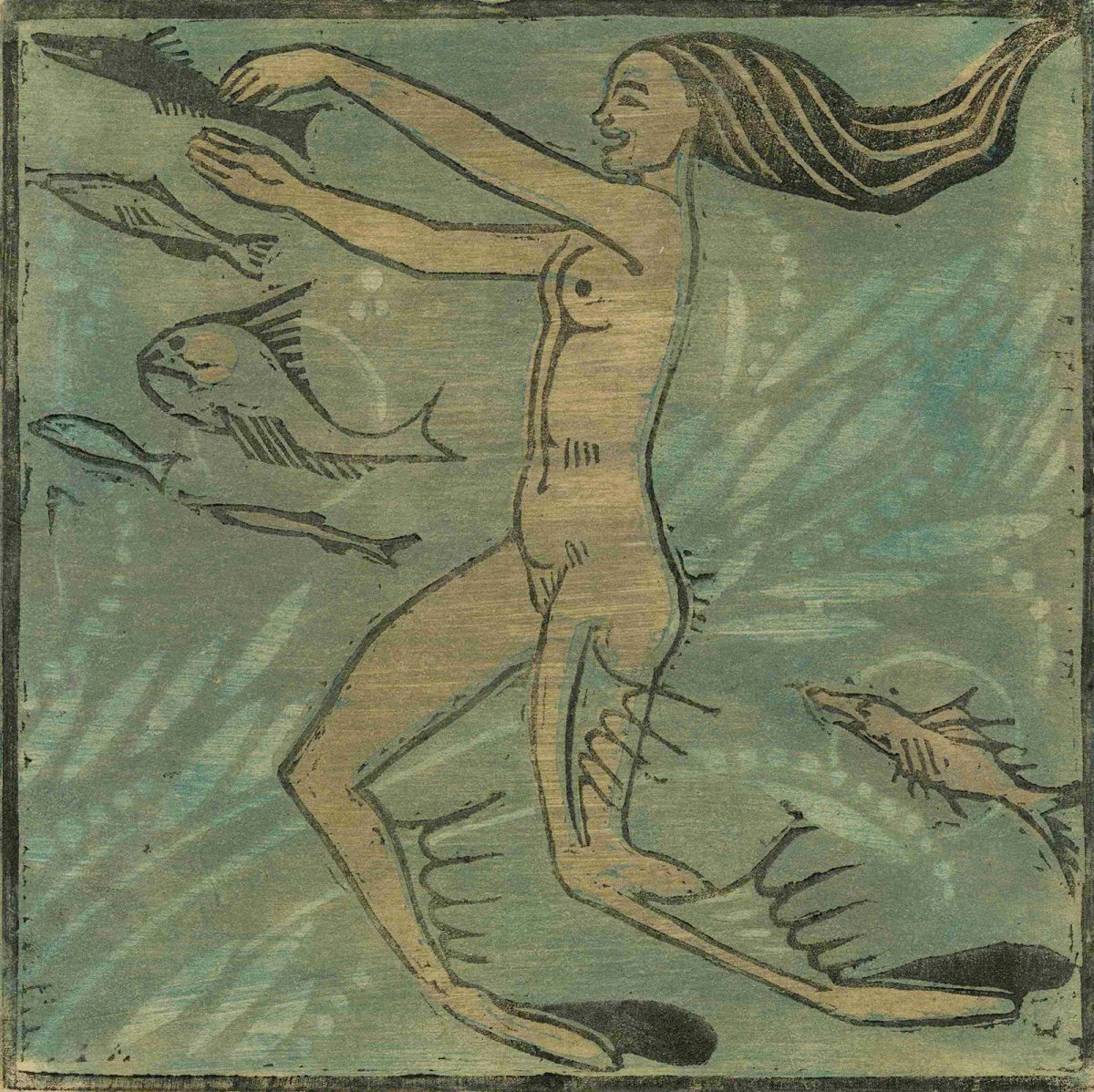The collection of the Fondation William Cuendet & Atelier de Saint-Prex houses nearly 950 works by Henry Bischoff, including 140 preparatory drawings for woodcuts and more than 800 prints of numerous states and proofs. This collection was generously donated in 1979 by the artist's children, Marie-Claude Lavanchy-Bischoff and her brother Luc Bischoff. In 1981, the Musée de l'Elysée in Lausanne organized an exhibition dedicated to his work, which was then presented at the Kunstmuseum Winterthur / Reinhart am Stadtgarten the following year.
In the 1900s, Bischoff spent time in Paris, where he connected with his compatriot Félix Vallotton and the Nabis painters Maurice Denis and Paul Sérusier. He then travelled to Munich, where he became deeply influenced by German Expressionism. It was during this period that he discovered the anonymous fifteenth-century woodcut vignettes that had experienced a revival since the late nineteenth century. Bischoff soon adopted the woodcut as his preferred medium. His early works, often featuring dancers and acrobats, are known for their vibrant energy. After returning to Switzerland in 1913, Bischoff became involved with the Cahiers Vaudois (1914-1920), a bold publishing venture founded by Edmond Gillard and Paul Budry, which also saw contributions from Charles Ferdinand Ramuz, René Auberjonois and Ernest Ansermet. Bischoff played an important role in the magazine, designing the magazine's famous logo, a wood-cut icon titled 'J'exprime' (I express), showing a hand crushing a bunch of grapes into a cup of wine. Following the lively style of his early work, his compositions after returning to Switzerland became more tranquil and often touched on religious themes, particularly after he converted to Catholicism in 1929. This period also marked the beginning of his work in book illustration, including a remarkable edition of Diderot's Neveu de Rameau (1920). Bischoff was a great reader of literary classics, and this work became a significant project in his later oeuvre after his 1927 meeting with the publisher Henry-Louis Mermod. From the 1920s until his death, Bischoff undertook many decorative projects. In 1932, he was appointed professor at the École cantonale des beaux-arts in Lausanne, where his passionate and attentive teaching left a lasting impact on many students. The challenging years of the Second World War coincided with a slowdown in his artistic output, but his rediscovery of the works of Giuseppe Arcimboldo (1526-1593), with their recurring themes of dancers and musicians, reignited an enthusiasm and freedom reminiscent of his earlier career.




